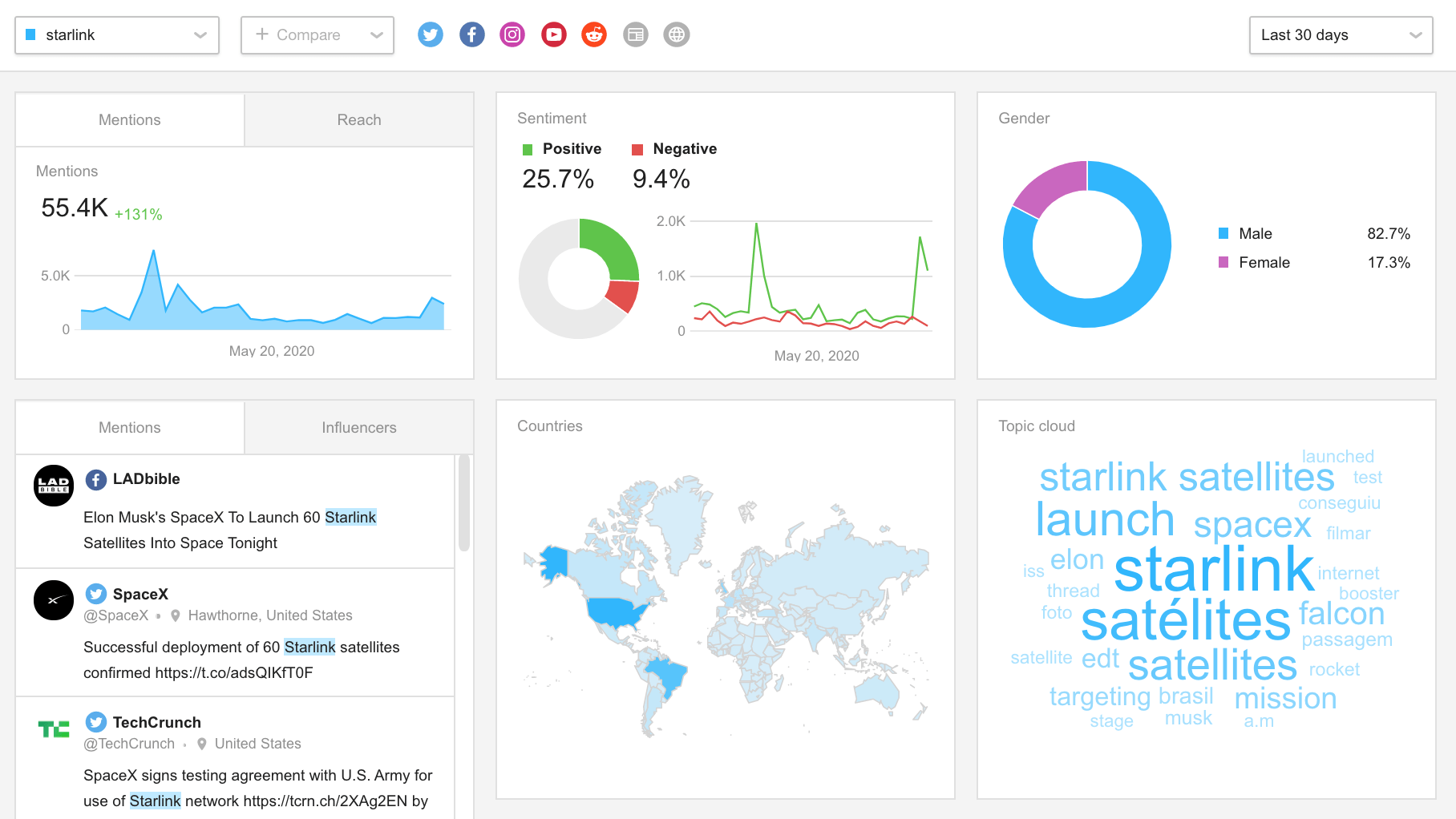5 ways to use social listening for HR

There is one thing about social listening that's important to understand:
Social listening isn't a marketing method. It's not a growth hack or a hack to improve customer service. Not by itself.
Social listening is a technology that allows you to find mentions of any keyword on the Internet. You can choose what to monitor: your brand, your favorite song, or your mum. It only depends on you what this technology will be used for. Will it be marketing, customer service, social selling, ego boost, or something completely different?

In this article, we'll look at how social listening can be used to simplify and improve HR.
Social listening for head hunting
Head hunting isn't an easy task. Especially, when it comes to some industries (IT, I am looking at you). In some industries, usual methods just aren't enough to get the people you want to get. Instead, you need creativity. You need to try something new.
That's when social listening enters the scene.
By creating alerts that specify the kind of a candidate you're looking for, you'll find the people who fit your criteria and will be able to reach out to them. For example, you can create a query that contains keywords such as "graduate", "Java", "remote". Or, the one that contains keywords such as "Mandarin teacher", "Brighton".
And then, you can specify the search to include social media channels and job search websites, such as indeed.com, monster.com, and glassdor.com. In our tool Awario, this is done with the Whitelist feature.
Also, don't forget to specify language and location, if necessary. As a result, you'll receive a feed of people looking for a job on the job search websites, and of social media accounts of people who fit your criteria and might not be looking for a job right now - that's before you offer them one.
Note: to create such queries, you need a tool with the Boolean search option.
By signing up I agree to the Terms of Use and Privacy Policy
Social listening for profiling
In 2020, online reputation is everything. People looking for a job check out company review sites and ask around to find out in advance how it is to work for a certain company. In return, companies check the candidate's social media profiles to know more about them.
For many companies, finding the right person to work with doesn't stop at choosing the one most qualified. HR department has to know as much about the person as possible to make sure they'll fit into the team and share the company's values and goals. Luckily, we live in the age of transparency: most of us share tons of information publically, show off who we are, what our hobbies, interests, and values are. While checking social media profiles is a good start, social listening provides a quicker and more comprehensive solution. By creating the search query for the candidate, you'll instantly see all their social media profiles (and not just the one you guessed to search for), articles and blog posts they wrote, articles and other resources where they were mentioned, and influencers they've worked with if any. Creating a query and leaving the tool for a couple of hours so that it can collect the info will save you time, resources, and show you everything you might want to know about the candidate.
Note, that, of course, social media monitoring tools only reveal public information.
Social listening for competitor research
Competitor research wins on many, many levels when social listening is introduced. The part of competitor research that the HR department is interested in is no exception. By monitoring your competitors' brands, you'll discover among other factors where the competitors are recruiting, what roles they are recruiting for, and how long does it take them to close the vacancy. This can be used for the HR, often for IT recruitment and marketing departments because such information tells a lot about expansion plans, product development, and marketing plans.
Social listening for brand reputation
Brand reputation is traditionally something marketing and PR care about. However, there is a difference between the information and the feelings the customers and potential customers have about a brand and what the employees and potential employees think about it. The latter is the responsibility of the HR department.
You can create a query (again, using Boolean search ) to search for social media posts and other publications that mention your company in the context of the work environment. This will give you an understanding of what the company's reputation is among its employees; what are the pain points and what the company does well. This can be extremely useful for the company's recruitment success and for its inner environment.
To create such a query, combine the name of your brand with the keywords that signal an employee of the company ("work for", "worked for", "employed", "work as", "job is", etc.).
If there are thousands of past and present employees and there are too many results to instantly understand brand reputation, use sentiment analysis. Awario, for example, will break down all found mentions into positive, negative, and neutral, and show you which sentiment prevails and how they change over time.

Social listening for industry monitoring
Staying up-to-date is as important for HR as it is for marketing and PR departments. Social listening helps to monitor industry news, legal updates, conferences, and publications you're interested in. It helps to stay on top of new trends and developments.
Are you ready to try social listening?
Using new technology isn't always something people are excited about. But here at Awario we promise: social listening tools are easy and fun, while the results they bring are almost magical: you find the people who you'd never find otherwise and see the opinions you'd never know about. Often from your own employees! Excited?
By signing up I agree to the Terms of Use and Privacy Policy













